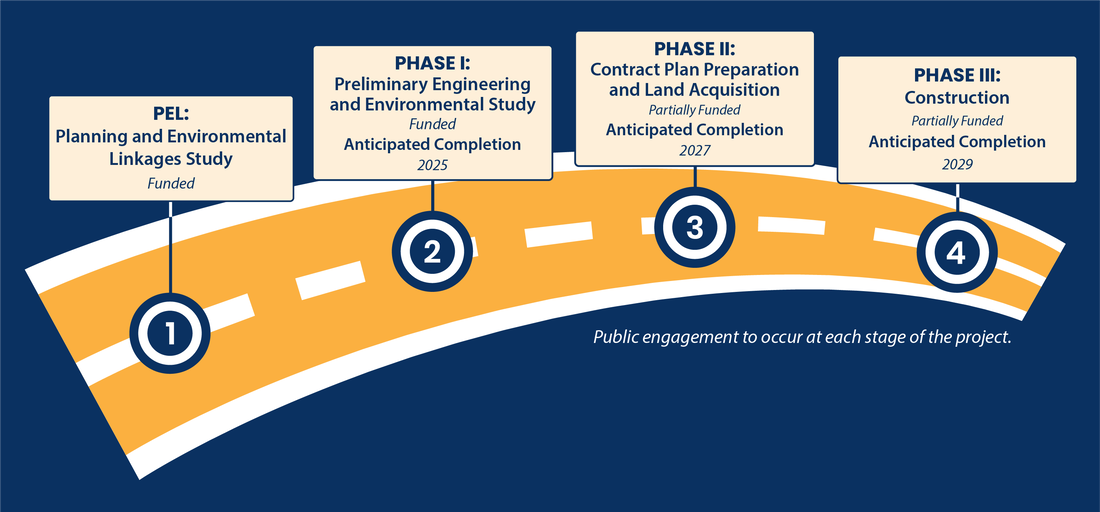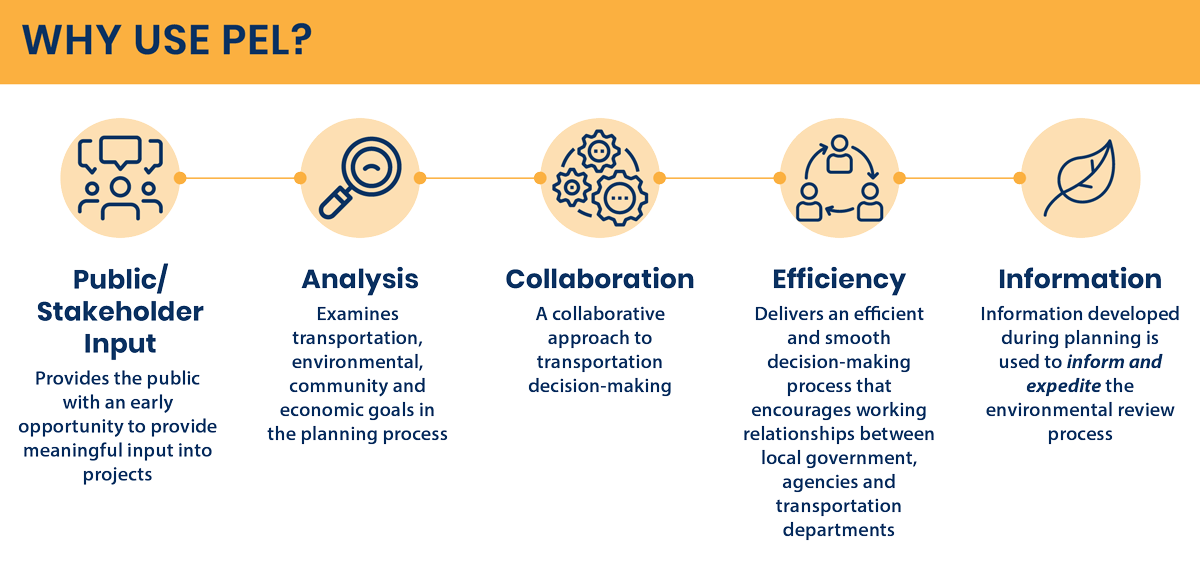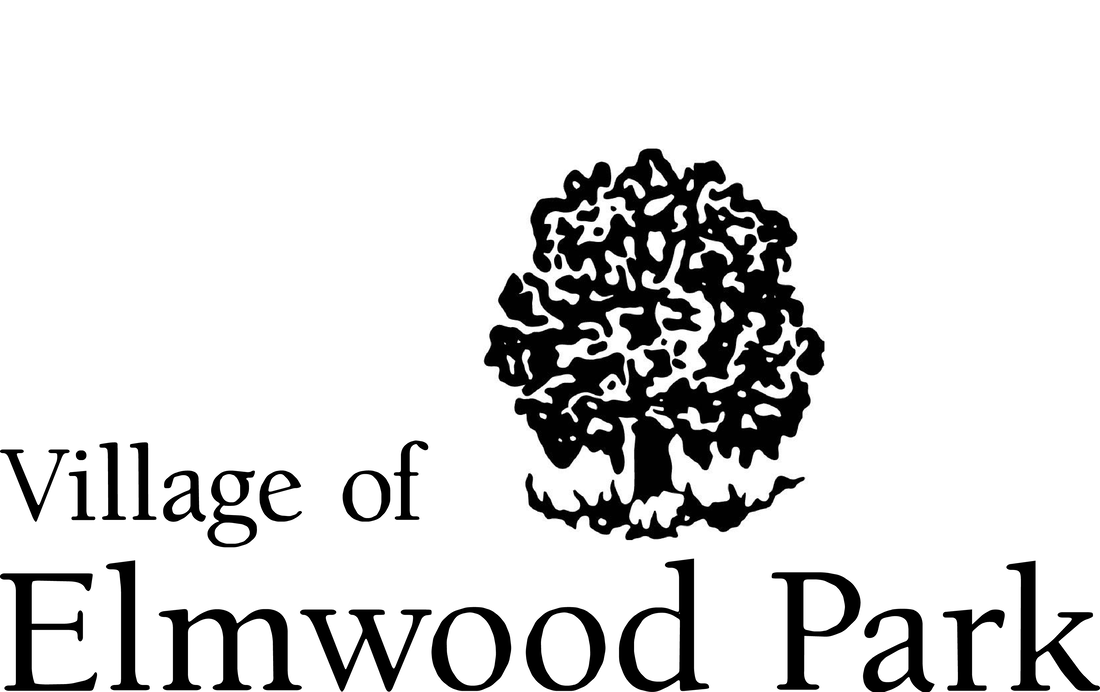Study Area
The PEL and Phase 1 studies that comprise this project will review potential impacts to the environment, traffic patterns, drainage configuration, and railroad alignments within a defined "study area." For Grand Gateway, the study area includes Conti Parkway circle and the areas surrounding the rail line along Grand Avenue.
Specific study area dimensions include:
Specific study area dimensions include:
- Haymond Street to 73rd Avenue along Grand Avenue (approximately 1.0 mile).
- The CP Railroad from the Grand Avenue crossing (2,300 feet west and 3,000 feet east).
- Adjoining side roads as shown on the aerial map below.
Study Process
The Grand Gateway Project Study was initiated in March 2020 and is anticipated to last through 2026. During this time, the project team will work closely with various agencies, the Community Advisory Group (CAG), and community members to first review current conditions and needs in the corridor under the PEL process. Then they will collaboratively develop improvement alternatives, and determine a preferred improvement alternative under the Phase 1 process. Public input is welcome throughout both studies. A detailed outline of project milestones is provided below. All meeting materials will be posted as they become available in the Project Resources section of this website.
Project Timeline
Project Development Process
Planning and Environmental Linkages (PEL) Study
The Village of Elmwood Park is initiating a Planning and Environmental Linkages (PEL) study as part of the Grand Gateway Project. The PEL process was established by the Federal Highway Administration (FHWA) to provide a more efficient process of identifying, evaluating, and selecting preferred transportation improvements. This process allows early planning-level decisions to be carried forward so that future National Environmental Policy Act (NEPA) requirements are connected, and planning analyses and decisions are not revisited.
In addition to informing and expediting the Phase 1 process under NEPA, the PEL process will provide an opportunity for early coordination with the public as well as local, state, and federal agencies in a transparent and collaborative environment. By working together, alternatives and avoidance measures can be developed at a local level. A PEL process will help the study team identify and document transportation needs, safety issues, and potential improvements for the study area.
In addition to informing and expediting the Phase 1 process under NEPA, the PEL process will provide an opportunity for early coordination with the public as well as local, state, and federal agencies in a transparent and collaborative environment. By working together, alternatives and avoidance measures can be developed at a local level. A PEL process will help the study team identify and document transportation needs, safety issues, and potential improvements for the study area.
Phase I: Preliminary Engineering
After the PEL Study is completed, the project team will move into Phase I Engineering. This phase of study includes the completion of detailed studies with respect to traffic performance, safety, socioeconomic and environmental impacts, roadway design and alternatives analysis, structural design, as well as public/stakeholder involvement, and state and federal agency coordination.
Phase II: Contract Plan Preparation and Land Acquisition
Phase II will focus on finalizing the design that came out of Phase I. This means ensuring the geometric designs are completed, then preparing contract plans and land acquisition for the right-of-way that will need to be purchased for the project.
Phase III: Construction
The final component to the Grand Gateway Grade Separation project is construction. The construction team will work closely with the Village, Metra, Pace and local businesses to ensure there will be minimal impacts to residents and users of the area. Phasing will be used to ensure transportation can still run while the new grade separation is being constructed.
After the PEL Study is completed, the project team will move into Phase I Engineering. This phase of study includes the completion of detailed studies with respect to traffic performance, safety, socioeconomic and environmental impacts, roadway design and alternatives analysis, structural design, as well as public/stakeholder involvement, and state and federal agency coordination.
Phase II: Contract Plan Preparation and Land Acquisition
Phase II will focus on finalizing the design that came out of Phase I. This means ensuring the geometric designs are completed, then preparing contract plans and land acquisition for the right-of-way that will need to be purchased for the project.
Phase III: Construction
The final component to the Grand Gateway Grade Separation project is construction. The construction team will work closely with the Village, Metra, Pace and local businesses to ensure there will be minimal impacts to residents and users of the area. Phasing will be used to ensure transportation can still run while the new grade separation is being constructed.








